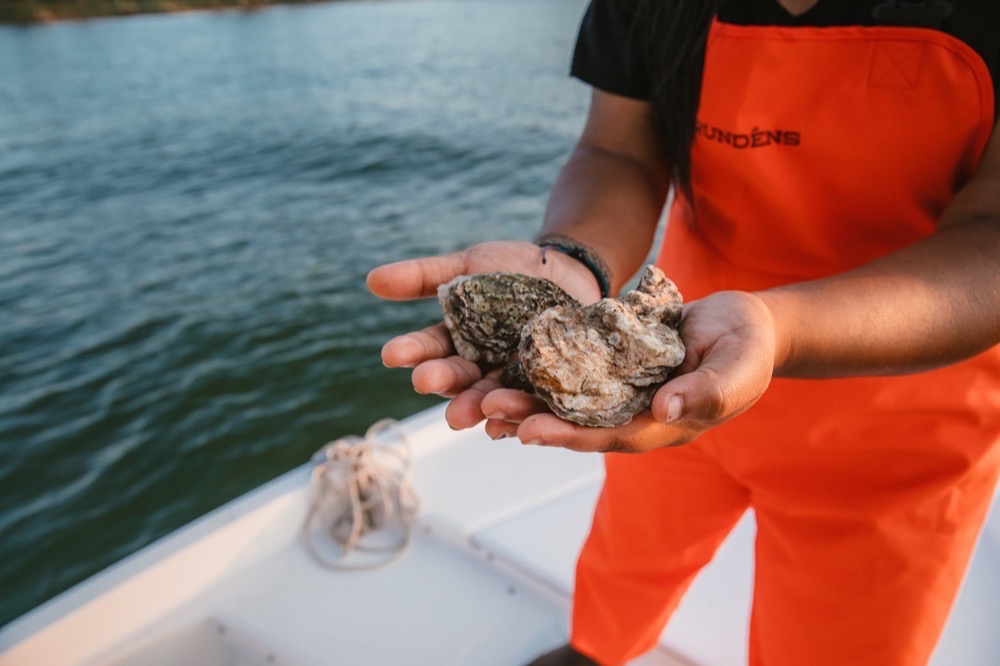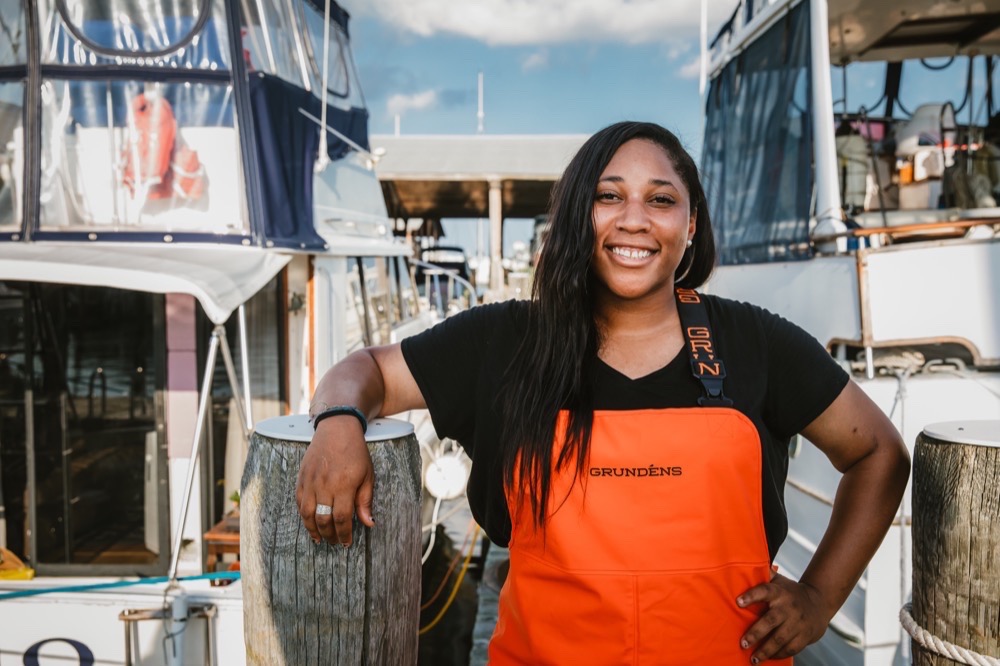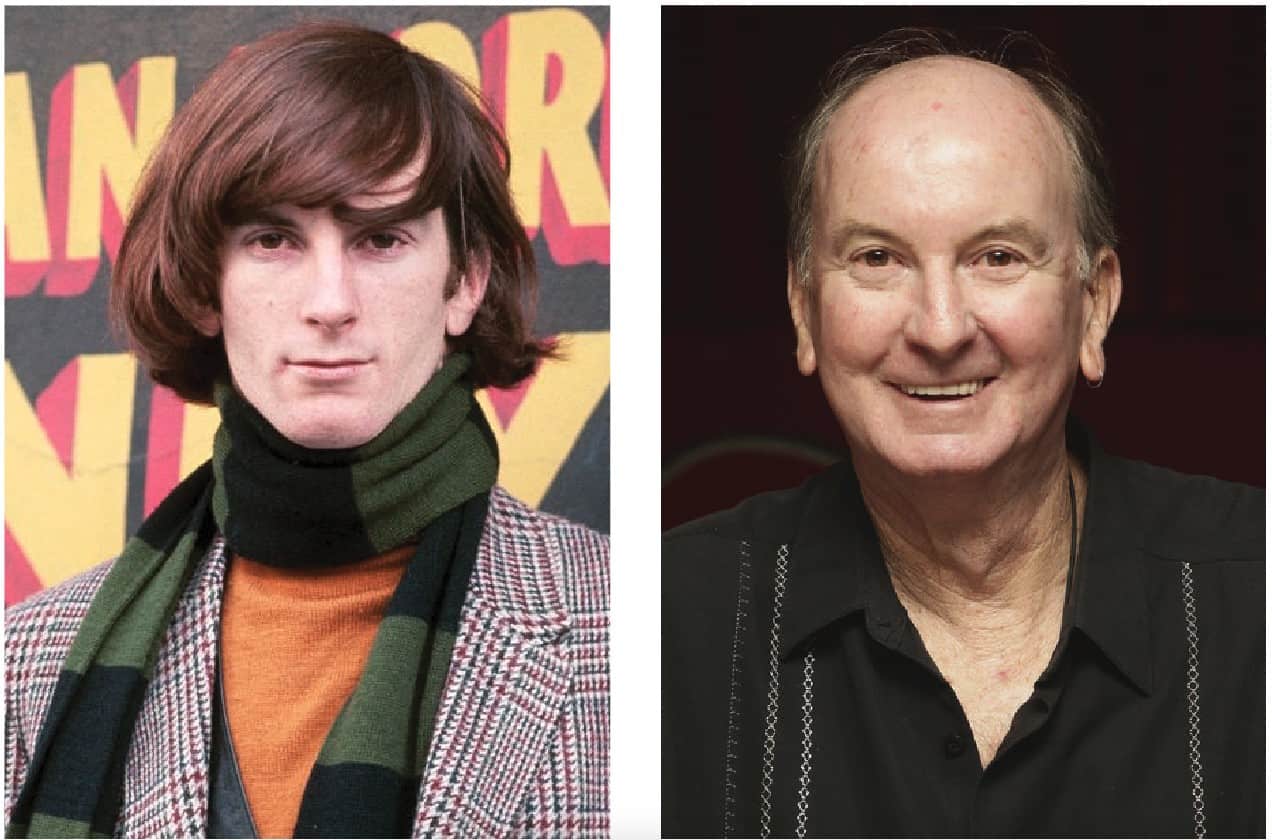A new nonprofit seeks inclusivity in aquaculture
In the summer of 2020, as the pandemic surged across the country, many of us watched from lockdown isolation at the horror of George Floyd’s killing and the BLM protests that followed in its wake. In the months that followed, the aftermath hit home as individuals, companies, and organizations began to acknowledge the system of racism in our own communities and workplaces.
Watching the scenes unfold from the Eastern Shore of Maryland, Imani Black was struck by the implications for her industry. Then an oyster hatchery manager at Hoopers Island Oyster Company, she’d long accepted that she would be the only woman working in the crews and labs on oyster farms.
As a recent graduate of Old Dominion University who’d played on their Division 1 women’s lacrosse team, Black often had to lift cages of oysters from the hands of well-meaning male coworkers that had taken them away from her for being “too heavy.”
Black quickly learned to stand her ground as the lone female presence on all-male oyster farms. But as the Black Lives Matter movement grew and pushed for change, Black realized her gender wasn’t the only thing that set her apart. In all of those grow-out locations, in all of those hatcheries, she hadn’t just been the only woman, but also the only woman of color. This was, she felt, deeply problematic. She decided to do something about it.
Black spent the rest of that long, hot summer of unrest figuring out a way to make aquaculture an equitable and welcoming place. She came away with two big takeaways. Addressing the lack of diversity in her industry came down to education and community.
Like a lot of science-dominated fields, oyster farming and seed hatcheries were almost entirely white and male, with the only people of color working in the manual labor force rather than the leadership. Change on that front needed to start early in schools, Black felt, helping students of color—particularly girls—to connect with marine biology in meaningful, deep ways.
Black herself had been deeply impacted by a summer camp she’d attended at age seven at the University of Maryland Center for Environmental Sciences at Horn Point, an experience she credits with setting her on her life’s path. “We were catching striped bass, we were planting submerged aquatic vegetation, we were planting oysters. I loved it. When my mom came to pick me up, I did not stop talking. From Cambridge to Chestertown, I just couldn’t stop sharing how excited I was about all the things I learned.”

Black is a Chestertown native whose maritime roots go back for generations on the Eastern Shore. Feeling buoyed and supported by those ties (“working on the water is in my blood”), she felt strongly that to bring more people of color into aquaculture, there needed to be a supportive, knowledgeable family welcoming them to the industry. To date, the only Black-owned oyster farm she had ever seen was on an episode of Netflix’s Chef’s Table, and that singularity was troubling. It would be critical to circle the wagons within the current aquaculture field as much as possible, seeking out people already working in oyster farming and bringing them together as a community.
Black wasn’t quite sure yet how best to accomplish these two goals, but one thing was for sure: Her initiative needed to go further than ticking the diversity box, something she’d seen over and over as corporations and businesses tried to acknowledge the new “equity and inclusion” climate through plans and statements. Words were cheap. Black was interested in action. She felt the call. “I sat at my kitchen table, and I thought, I haven’t seen any other women of color in aquaculture, and this is an industry that I love. I have to get over my impostor syndrome, because this is a lot bigger than me. Maybe it’s time that I step up and try to figure it out. I didn’t know how to start, or how to launch a nonprofit. But I just knew that I needed to—I had to do it.”
On her own, with some encouragement from her former aquaculture professors at the Virginia Institute of Marine Science, Black decided the way to provide on-the-ground solutions was by creating a new nonprofit. Called Minorities in Aquaculture, the mission would be focused on education and community. By educating minority women about the restorative benefits provided by local and global aquaculture through workshops, mentorships, and other career cultivation opportunities, Minorities in Aquaculture (MIA) sought to create a more diverse, inclusive aquaculture industry. In September of 2020, Minorities in Aquaculture was officially launched.
It’s been more than a year, and today, MIA is going gangbusters. Black’s timing was perfect—MIA was created to address a serious diversity deficit in the aquaculture industry at the very moment the aquaculture industry became aware that something needed to change. Almost immediately, MIA attracted media coverage, with profiles in Conde Nast Traveler, Cooking Light, and Chesapeake Bay Journal. The organizations followed, and to date, Black has launched partnerships with the Environmental Justice Journalism Initiative, OysterSouth, and the United States Aquaculture Association, with more in the pipeline. MIA has big projects in the works post-pandemic, and Black is excited to jump into the boots-on-the-ground phase after months of planning.
The intense response to MIA’s launch initially caught Black by surprise. “I didn’t have a transition period. I went from being frustrated and unsure of what to do to create a nonprofit to what is a now-global organization. There’s no way of getting prepared for that, I just let my blind passion take the wheel. I am unapologetic about what I want to do and the things, the action, that needs to happen now for aquaculture.”
Unsurprisingly for a woman who saw no reason not to start her own nonprofit, Black continues to charge ahead. While running a thriving new organization, she is working toward her master’s degree from the University of Maryland Center for Environmental Science at Horn Point, where it all began with summer camp. She hopes to focus her studies on an innovative approach to eliminating barriers to aquaculture for different communities of color, using MIA as a case study.
For Black, all the attention and support MIA has drawn is fine as long as it gets the aquaculture industry to a place where it feels welcoming for women oyster farmers, hatchery managers, and biologists of color.
“At the end of the day, the basis of everything I do is active minority engagement. When I can count six minority women that are active in aquaculture, I’ll know I did something. My goal isn’t just strong women of color—it’s women of color who are strong in aquaculture.”



